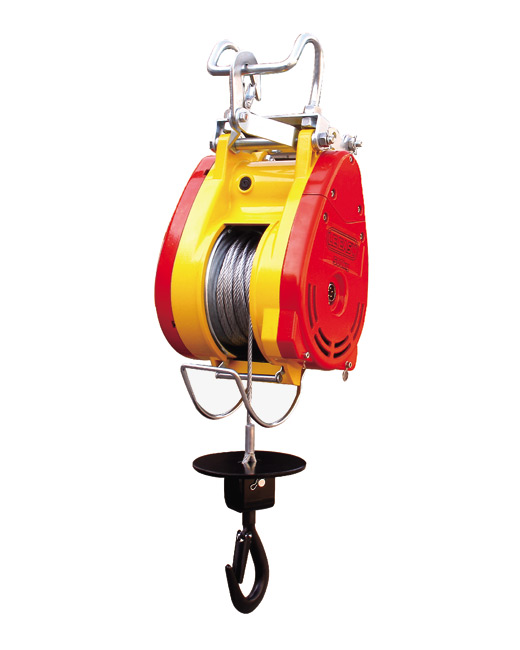When selecting a small electric winch for specific needs, there are several features and factors to consider.
Here are some important ones:
Load Capacity: Determine the maximum weight capacity required for your application. Ensure that the small electric winch you choose can handle the weight of the loads you intend to lift or pull. Consider both the static and dynamic load capacities to ensure safe and efficient operation.
Line Speed: Evaluate the line speed requirements for your application. Line speed refers to how fast the winch can pull in or let out the cable. Different applications may have specific speed requirements, so choose a winch with a line speed that matches your needs.
Cable Length: Consider the length of cable or wire rope required for your application. Ensure that the small electric winch has a sufficient cable length to reach the desired distances or heights. Remember to account for any additional factors such as the need for extra cable length for anchoring or attachment points.
Power Source: Determine the available power source and compatibility with the small electric winch. Electric winches typically require a direct current (DC) power supply, so ensure the power source is suitable and easily accessible. small electric wench Consider whether a wired connection or a battery-powered winch is more suitable for your needs.
Control Options: Assess the control options provided by the small electric winch. Look for features such as remote control capabilities, control switches or buttons, and any additional control mechanisms that allow for convenient and safe operation.
Mounting and Installation: Consider the mounting options and installation requirements for the small electric winch. Evaluate whether it can be easily mounted on the required surface, such as a vehicle, trailer, or fixed structure. Ensure that the winch’s size and weight are compatible with the mounting location and that the necessary mounting hardware is included or available.
Durability and Construction: Examine the build quality and materials used in the construction of the small electric winch. Look for features such as corrosion resistance, weatherproofing, and robust construction to ensure the winch can withstand the environmental conditions and demands of your application.
Safety Features: Check for safety features incorporated into the small electric winch. These can include overload protection, automatic braking systems, emergency stop buttons, and limit switches to prevent overextension or over-retraction. Safety features are crucial for protecting both the operator and the equipment.
Brand Reputation and Warranty: Consider the reputation of the manufacturer or brand of the small electric winch. Look for customer reviews, reliability ratings, and the availability of warranties or after-sales support. Choosing a reputable brand can provide assurance of quality and reliability.
Budget Considerations: Finally, consider your budget and the overall value provided by the small electric winch. Compare the features, quality, and price of different models to find the best balance between your requirements and budget constraints.
By considering these factors, you can select a small electric winch that meets your specific needs and ensures safe and efficient operation for your intended applications.
What maintenance and servicing are required for a small electric winch?
Maintenance and servicing for a small electric winch are essential to ensure its proper functioning, longevity, and safe operation.
Here are some common maintenance tasks and servicing requirements:
Regular Inspection: Perform regular visual inspections of the small electric winch to check for any signs of damage, wear, or loose connections. Pay attention to the cables, control switches, mounting hardware, and any moving parts. Look for frayed cables, damaged components, or signs of corrosion.
Lubrication: Lubricate the moving parts of the winch as recommended by the manufacturer. Apply lubricants to the gears, bearings, shafts, and other areas where friction may occur. Proper lubrication helps reduce wear and ensures smooth operation.
Cable Maintenance: Inspect the cable or wire rope for signs of wear, fraying, or damage. Replace any damaged cables promptly to avoid accidents or equipment failure. Clean the cable regularly to remove dirt, debris, and rust that may affect its performance.
Electrical Connections: Check the electrical connections and wiring for any loose or damaged connections. Ensure that all connections are secure and properly insulated. Tighten loose connections and replace any damaged wiring to prevent electrical issues.
Control Switches and Remote: Test the control switches or remote control unit to ensure they are functioning correctly. Replace any faulty switches or remote batteries as needed. Clean the control switches or buttons to remove dirt or debris that may affect their performance.
Brake Inspection: Inspect the winch’s braking system to ensure it engages and disengages properly. The brake should hold the load securely when not in use and release smoothly when activated. Adjust or replace the brake components if necessary.
Load Testing: Periodically conduct load testing to verify the winch’s performance. Apply a controlled load to the winch and observe its operation under different conditions. This helps identify any issues with the winch’s capacity, line speed, or braking system.
Environmental Protection: Protect the small electric winch from adverse environmental conditions. If used in outdoor or harsh environments, consider using covers or protective enclosures to shield the winch from dust, moisture, and extreme temperatures.
Servicing by Professionals: Schedule routine servicing and inspections by qualified professionals. They can perform more in-depth checks, maintenance tasks, and address any complex issues that may arise. Follow the manufacturer’s recommended service intervals and guidelines.
Operator Training: Ensure that operators are properly trained in the safe and correct use of the small electric winch. Provide training on operating procedures, safety precautions, and any specific maintenance tasks they should perform regularly.
Remember to consult the specific maintenance guidelines provided by the manufacturer of your small electric winch, as they may have additional or model-specific recommendations. Adhering to proper maintenance and servicing practices can help extend the lifespan of the winch and promote safe operation.
